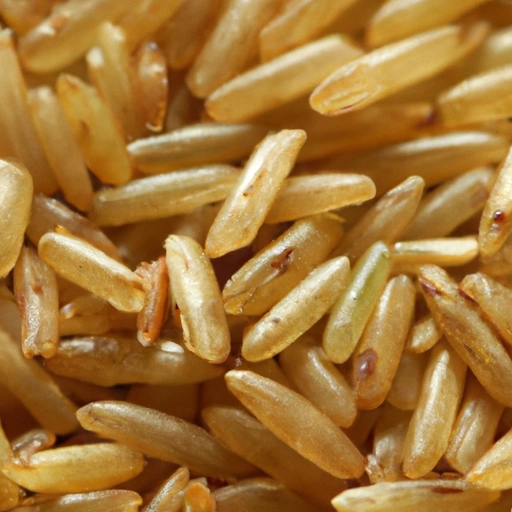Brown Rice
Description

Brown rice is a whole grain that has only had the outer husk removed, retaining the nutrient-rich bran and germ layers. It is a more nutritious alternative to white rice, which has these layers milled away. As a result, brown rice maintains a higher fiber content, essential fatty acids, and a variety of vitamins and minerals. It has a chewier texture and a more nutty flavor than its white counterpart, making it a favored ingredient for health-conscious cooks and those looking for more wholesome options in their diet.
Common uses
Brown rice is commonly used as a base for meals, in salads, soups, and casseroles. It is also incorporated into vegetarian and vegan diets as a hearty, nutrient-dense carbohydrate source. In addition, brown rice can be found in various forms such as rice milk, rice flour, and rice syrup, expanding its use beyond traditional culinary applications.
Nutritional value
Calories
One cup of cooked brown rice (195 grams or about 6.9 ounces) contains approximately 216 calories (905 kilojoules).
Protein
This same serving size provides about 5 grams (0.18 ounces) of protein.
Fat
Brown rice contains about 1.8 grams (0.06 ounces) of fat per cup.
Carbohydrates
It boasts around 44.8 grams (1.6 ounces) of carbohydrates, of which 3.5 grams (0.12 ounces) are dietary fiber.
Vitamins
It is a good source of various B-vitamins, including B1 (thiamine), B3 (niacin), and B6 (pyridoxine).
Minerals
Mineral content includes manganese, magnesium, phosphorus, and selenium, among others.
Health benefits
The high fiber content in brown rice helps in digestive health and may aid in lowering cholesterol levels. The presence of antioxidants may contribute to reducing oxidative stress. Consuming brown rice can also assist in maintaining a healthy weight and supporting heart health.
Potential risks
Despite its health benefits, brown rice contains phytic acid, which can bind minerals and reduce their absorption. It also has traces of arsenic, a toxic substance, though generally at levels considered safe if consumed in moderation. People with specific grain allergies should also avoid brown rice.
Common recipes
Brown rice is widely used in dishes such as stir-fries, rice bowls, pilafs, and sushi. It is also a common ingredient in whole-grain bread and snacks.
Cooking methods
It can be prepared using several methods, including boiling, steaming, or baking. The cooking time for brown rice is typically longer than that for white rice due to its outer bran layer.
Pairing with other ingredients
Brown rice pairs well with vegetables, beans, poultry, seafood, and tofu. It also complements a variety of spices and herbs, making it a versatile ingredient in many recipes.
Summary
Brown rice is a nutritious whole grain with a rich historical background and is commonly used in a multitude of recipes across various cultures. Its health benefits and versatility in cooking make it a valuable ingredient for those seeking a healthy and balanced diet.